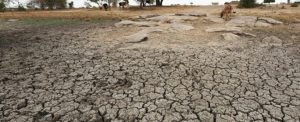WMO: 2022 State Of The Climate In Asia Report

The World Meteorological Organisation (WMO) has come up with its 2022 State of the Climate in Asia report, indicating that in 2022, Asia experienced extreme climate events, including high temperatures, droughts, floods, and cyclones, leading to significant socioeconomic impacts.
Report are:
- The annual mean near-surface temperature in 2022 was 1.15 °C above pre-industrial average
- Ocean heat content reached a new high
- Global mean sea level reached a new high due to ocean warming and ice sheet loss.
- 2022 had the second or third-highest mean surface temperature on record
- Northern Siberia, Central Asia, and Western China experienced above-average temperatures
- Regions in Iraq, Ganges-Brahmaputra Rivers, Korean Peninsula faced precipitation deficits
- South Pakistan, Southeast Asia, and northeast China experienced excessive rainfall
- Central India and the Himalayas recorded high precipitation
- Floods in Pakistan and India displaced millions and damaged agriculture.
- 23 glaciers in High Mountain Asia showed a continued mass reduction
- Urumqi Glacier No 1 in Tien Shan had the second most negative mass balance in 2021-22.
- 25 tropical cyclones formed in the western North Pacific Ocean and the South China Sea
- The Nanmadol typhoon affected Japan, causing evacuation, deaths, and economic damage.
- Severe floods in Pakistan displaced 14% of the population, causing deaths and displacements.
- Heavy monsoon affected Northeast India and Bangladesh, causing deaths and destruction
- Floods were India’s worst natural disaster in 2022
- The Yangtze River basin in China experienced the worst drought in six decades, impacting crops, energy, and economy
- Iran faced its third consecutive year of drought, leading to decreasing water bodies and economic loss.
- Floods in Pakistan, China, and India caused economic losses exceeding the average observed over 20 years
- Droughts in China and Iran resulted in significant economic damages
- Cyclones and storms led to milder economic losses compared to previous years.




